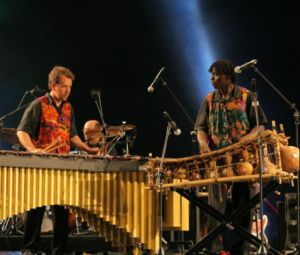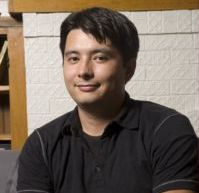
Promoting a deep understanding of world languages and cultures is a fundamental goal of the College of Arts and Sciences. Reaching this understanding means weaving the global experience throughout the CAS educational experience – programs, courses, study abroad opportunities, and of course, faculty connections and projects, and more.
Faculty members throughout CAS connect across the globe in a myriad of ways. The following three examples highlight a few of these far-reaching activities. That’s not the only way CAS delivers a distinctive education in this area.
“We are expanding our offerings in languages by adding Hebrew next fall; in international education with courses about Africa, East Asia, Latin America, South Asia, and the Middle East; in study abroad and exchanges in programs in France, England, China, Israel, and many other locations; and through the global reach of our faculty scholars,” says Ronald Sudol, dean of the college.
Understanding nationalism, terrorism and conflict firsthand
A 2008 trip to Northern Ireland during his sabbatical meant Associate Professor of Political Science Peter Trumbore could continue a research study of its peace process, which he began nearly a decade ago. Trumbore gained insight and information through meetings with people from varied backgrounds – from former Irish Republican Army (IRA) volunteers and ex-political prisoners to residents in communities which only a few years ago were active battlegrounds – to understand what has and hasn’t changed with the advances of the peace process.
In addition to advancing his research, Trumbore shares these experiences with OU students through his classes on terrorism, nationalism and ethnic conflict.
“One of the persistent questions in the study of terrorism is whether or not those who engage in political violence are somehow pathological personality types who justify their actions by claiming political motives,” he says. “What I noticed in my conversations with former IRA volunteers is how remarkably ordinary they seem and how committed they remain to the political goal they fought – and in some cases killed – to advance.”

In addition to sharing the insight he gained firsthand, Trumbore also shares with students how the nationalist sentiment of myth-making and symbol harnessing reinforces national identity. “This is vividly displayed across Northern Ireland, and no more so than in the murals that decorate the buildings in cities like Belfast and Derry,” he says. Trumbore took photos of murals which he will use to illustrate points for his students.
“While my students will read about how conflicting versions of identity, memory and history contribute to the ethno-national conflict, those lessons will be much more effective thanks to what I learned on this recent research trip,” Trumbore says.
Music specialist adds international flair to CAS music courses and ensembles

His vast experience includes performing with the foremost percussion groups of Ghana (West Africa), Uganda (East Africa) and Trinidad (West Indies), as well as serving as bandleader for the Biakuve Unity Ensemble and the Southpaw Isle Steelband. In the past year alone, Stone has performed in international music festivals in Mexico, South Korea and Spain.
“I fell in love with African music and discovered the power that music has to transcend cultural differences in 1992 after spending a year studying at the University of Ghana through a cultural exchange program sponsored by the University of Michigan,” says Stone. “This planted the seeds for my work, and many of the musicians I worked with during this year have remained my close friends and collaborators.”
Through his position as instructor of world music at OU, Stone has been able to fulfill a promise he made to his African teachers to start his own embaire xylophone ensemble in the United States. In OU’s CAS Department of Music, Theatre and Dance, Stone directs the OU African drum and xylophone ensembles – Akwaaba – and the OU Steel Band – Pan Jambies – as well as teaches several courses in ethnomusicology and international studies.
“One of my goals is to make international studies relevant to students’ everyday lives while also making clear the aspects unique to each individual culture,” he says.” I work to ensure that students see the many similarities between cultures and the common human conditions all people share.” He’s currently working to develop a study abroad program for OU students to travel to Ghana.
In addition to his work at OU, Stone formed his own record label and artist management company, Jumbie Records, with OU colleague Terry Herald and musicians from New York and Ghana, which has produced and recorded 10 world music CDs, ranging from traditional Ghanaian and Hungarian music to original music for steel pan and innovative cross-cultural fusions.
A video of Stone’s recent performance at the Sacheon International Percussion Festival (link: http://www.youtube.com/kakaire) is available online.
Preserving history through study of silent film
 With approximately 80 percent of silent films no longer in existence due to decomposition and other maladies, it’s difficult to piece together a full understanding of the history of film and the international history captured on film. Examining and preserving that history is the focus of Josh Yumibe’s research work.
With approximately 80 percent of silent films no longer in existence due to decomposition and other maladies, it’s difficult to piece together a full understanding of the history of film and the international history captured on film. Examining and preserving that history is the focus of Josh Yumibe’s research work.
This CAS Assistant Professor of English, who also teaches in the Film Aesthetics and History program, specializes in early cinema history and the study of color in silent and sound film. The past 15 years has seen a renewed interest in preserving and restoring these early films. Through his research, Yumibe has worked with a number of film archives in the United States and in Europe that are at the forefront of this work.
In fact, Yumibe has spent the last five years working on a joint project with the George Eastman House in Rochester, New York, and the Cineteca del Friuli in Friuli, Italy to preserve and research the filmography of the Davide Turconi Film Frame Collection, which offers images of the world before the Great War.
“Through this project, we’re working to preserve, digitally scan and eventually make available for study a large collection of nitrate-film fragments that were originally collected by the late Italian film historian,” he says. “Turconi culled most of these frames from the early films amassed by the Jesuit priest Josef Joye in Switzerland, primarily between 1905 and 1911, for educational purposes in his parish.
“This work showcases some of the potential of archival and academic collaboration, as well as demonstrates the usefulness of digital technologies to complement and reimage – not replace – historical media,” he adds. “This work will provide students access to historical material that was before unavailable.”
Through a second project, Yumibe is examining the manual coloring of internationally produced films to prepare a book that will provide the first detailed account of the techniques. “This will be useful to people interested in the history of color in art, mass culture and film.
“It’s not widely known that color was used in the cinema since the medium’s inception,” he explains. “During the silent period, color was usually added manually to film prints after their photographic exposure and development through the applied coloring techniques of tinting, toning, stenciling and hand coloring. This history has been largely overlooked because of the color’s chemical instability – making it difficult both to preserve and reproduce. Because of this instability, many silent films that were originally manually colored now exist only as black-and-white copies.“Overall, these projects will help students think through historical and contemporary issues pertaining to the transnational flows of various media around the world,” he says.
Promoting a deep understanding of world languages and cultures is a fundamental goal of the College of Arts and Sciences. Reaching this understanding means weaving the global experience throughout the CAS educational experience – programs, courses, study abroad opportunities, and of course faculty connections and projects, and more. Faculty members throughout CAS connect across the globe in a myriad of ways. The following three examples highlight a few of these far-reaching activities. That’s not the only way CAS delivers a distinctive education in this area.